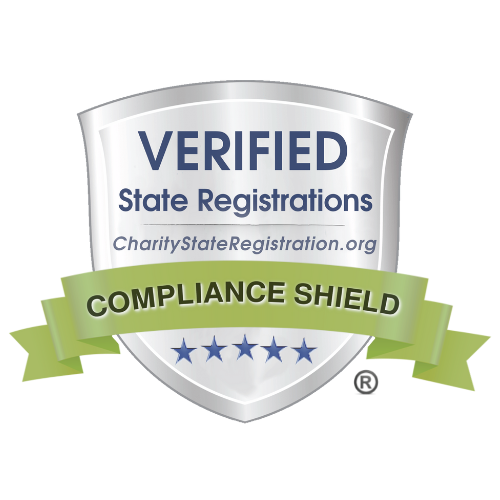Ryan Britch | April 15, 2020
Read: IAVA’s 10th Annual Member Survey
As the Government Affairs Associate at IAVA, one of my responsibilities that I enjoy most is working on our annual member survey. I spent six months designing questions, punching numbers, and analyzing data, and the survey results are now live! I’m really excited to share with you more about what I have learned about IAVA and the experiences and perspectives of our members.
Each year IAVA surveys our members to gauge the challenges and successes of this generation of veterans. We then translate IAVA members’ experiences and views based on the annual survey to advise the work of the Policy Department on legislative and policy matters. Essentially, our annual survey impacts everything that IAVA does.

Gender, ethnic, and religious demographics of our members have stayed consistent over time. We are, however, reaching the 20th year of the Global War on Terror, and the average age of our members reflects that, with 35% of our members now being 51 or older.
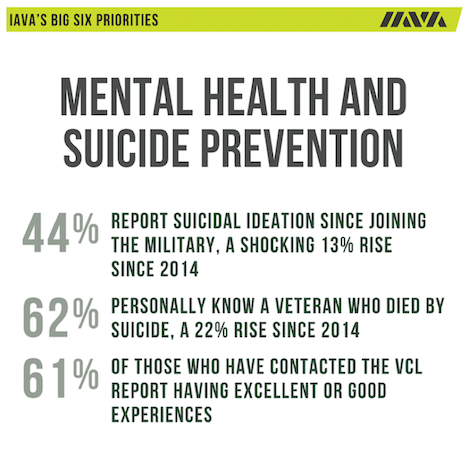
Mental health and suicide prevention continues to be the top issue impacting the post-9/11 generation. The veteran suicide rate has increased substantially since 2001, and our member survey is reflective of that. Among IAVA members, the percentage of those who report personally knowing a veteran who has died by suicide has increased 22% in the last five years. Furthermore, the percentage of IAVA members who report having suicidal ideation since joining the military has also increased.
Ninety-six percent of our members report being aware of the Veterans Crisis Line. However, only 26% have contacted the VCL in times of need. Sixty-one percent of those who have contacted the VCL report having excellent or good experiences. Although, 21% reported their experience as poor or terrible. While VA has invested millions of dollars on suicide prevention efforts, suicide rates continue to climb in the military and veteran community. It is clear that a different and more robust approach is needed.
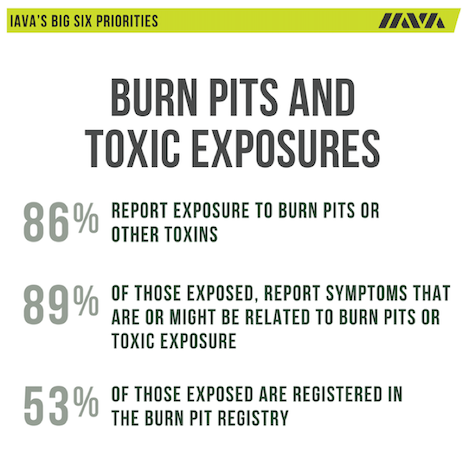
Toxic exposure is another top issue among our members. Nearly nine out of ten IAVA members have been exposed to burn pits or other airborne toxins. Among those who have been exposed, an overwhelming majority report they are experiencing symptoms that are or might be related to burn pits or toxic exposure.
Additionally, of those who have been exposed, over half are registered in VA’s Airborne Hazards and Open Burn Pit Registry, a significant increase from 38% in 2017 and just 10% in 2014. 35% of those who had registered reported facing issues while attempting to register. So, while the data shows that we are making progress in tracking veterans who have been exposed, it also shows that issues still remain.
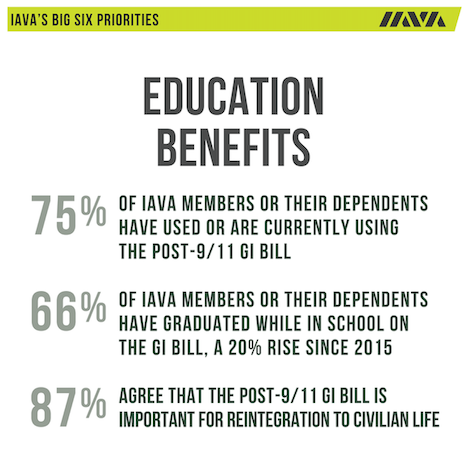
This year’s survey is not all bad news though – here is some good news. Post 9/11 veterans are thriving when it comes to education and employment. Three out of four have used the Post-9/11 GI Bill or have transferred their benefit to a dependent, up 13% since 2014. There has also been a 20% increase in the number of IAVA members or their dependents who have graduated from their programs.
Only 6% of IAVA members report being unemployed and looking for work. This statistic is down significantly from 10% in 2014, indicating that veteran employment resources, initiatives and training programs are successfully working to reduce veteran unemployment.
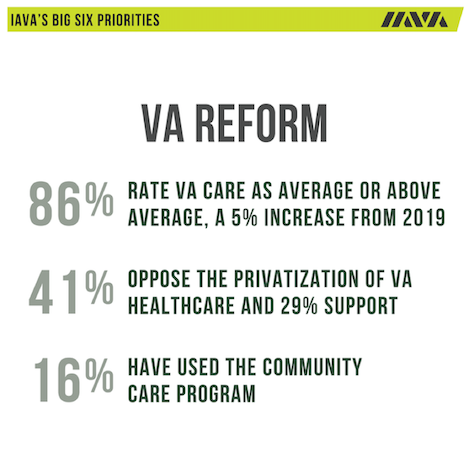
Data this year shows that long overdue changes are happening at the Department of Veterans Affairs. IAVA members are reporting better healthcare experiences at VA. 59% rate their overall VA Healthcare experience as excellent or good. This is a steady increase from 54% in 2019 and 42% in 2017, and it’s a clear sign that VA efforts to reduce wait times, improve customer service, and increase patient satisfaction are starting to pay off.
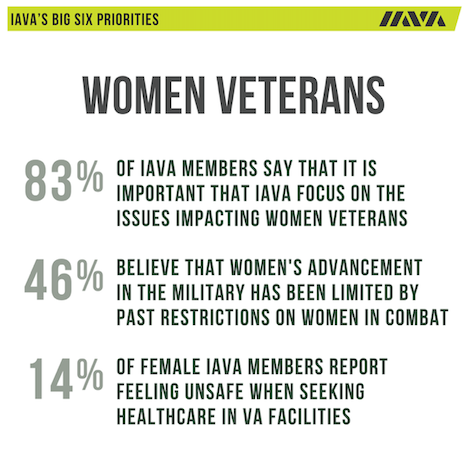
Opinions and perspectives on women veterans are also moving in the right direction. 61% of IAVA members agree with DoD’s decision to open combat MOS positions to women, a significant increase from 53% in 2017. Additionally, an overwhelming majority of IAVA members say that it is important that IAVA focus on the issues impacting women veterans
However, one in six female IAVA members report that they do not feel respected or safe when seeking care in VA health facilities. So, while support for women veteran’s issues is growing, there is still much more to do to ensure that women veterans are treated equally and feel welcomed at VA.
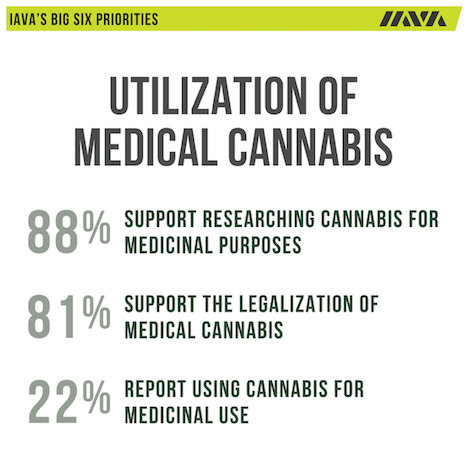
On the issue of medical cannabis, opinions have stayed consistent with our 2019 annual survey. A majority of IAVA members support researching cannabis for medicinal purposes, and there is overwhelming support for the legalization of medical cannabis. One in five of our members report personally using cannabis for medicinal use. Our member’s strong and unwavering opinions on medical cannabis show that more research and a better understanding of cannabis is needed. Many of our members struggle with chronic pain, insomnia and post traumatic stress, and they deserve to know if medical cannabis is a safe and effective treatment option.
Overall, our data this year shows that Post-9/11 veterans are succeeding in education and employment and are having better healthcare experiences. However, significant issues and barriers still remain: veteran suicide continues to climb, women veterans still do not receive equal treatment, and more and more veterans are getting sick from toxic exposure. Join us as we put this data to good use and advocate for legislation that will ensure veterans get the healthcare and resources they rightly deserve.
Check out the legislation we are supporting here.



